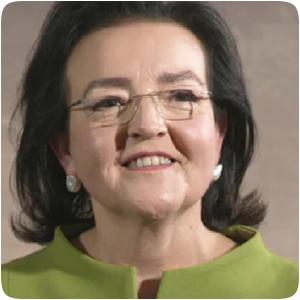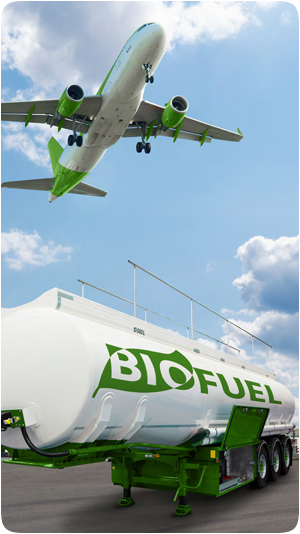 There is a fifty-fifty chance that the annual average global temperature will reach 1.5°C above the pre-industrial level within the next five years, according to the World Meteorological Organisation. We must do everything in our power to keep emissions as low as we possibly can.
There is a fifty-fifty chance that the annual average global temperature will reach 1.5°C above the pre-industrial level within the next five years, according to the World Meteorological Organisation. We must do everything in our power to keep emissions as low as we possibly can.
That means slashing transport emissions by at least 90% by 2050 compared to 1990 levels. Transport is responsible for almost a quarter of Europe's greenhouse gas emissions, and one of the only sectors where emissions are still increasing. The lion's share of those emissions come from road transport at three quarters, with aviation coming in second at 12%.
The recent past has been turbulent for these sectors. During the height of the pandemic, international transport, and aviation in particular, suffered severe disruption. On top of that, the war in Ukraine has revealed the cost of our dependence on Russia's fossil fuels and its impact on our economy, giving us all the more reason to accelerate the decarbonisation of our society at large, and transport in particular. The European Commission has made proposals to achieve this goal.
For road transport, we are proposing to introduce stronger emissions standards for cars and vans. From a 2021 baseline, we want to cut the average emissions of new cars by 55% as of 2030, and by 100% from 2035 (for new vans, the reduction targets are 50% and 100%). This means that as of 2035, all new cars and vans would be zero emission vehicles.
 But zero emission vehicles cannot become mainstream without new infrastructure. If we are going to make the leap to sustainable vehicles, people will need new charging points. We are therefore proposing that Member States expand charging capacity, and install public charging and fuelling points at regular intervals on major motorways. We propose fleet-based targets that would ensure that 1 KW of charging capacity is installed for each battery electric car or van registered in a Member State.
But zero emission vehicles cannot become mainstream without new infrastructure. If we are going to make the leap to sustainable vehicles, people will need new charging points. We are therefore proposing that Member States expand charging capacity, and install public charging and fuelling points at regular intervals on major motorways. We propose fleet-based targets that would ensure that 1 KW of charging capacity is installed for each battery electric car or van registered in a Member State.
Even while cleaner vehicles join the market, we must continue to decarbonise the fuels of the existing fleet and incentivise the move to zero-emission vehicles. We are therefore proposing to create a second EU-wide Emissions Trading System (ETS), which would put a price on carbon emissions from road transport, as well as from emissions from buildings. In practice, the system would not apply to drivers, but to fuel suppliers. The ETS works on the principle of 'capand-trade': for every ton of CO2 (or equivalent) emitted, fuels suppliers would have to surrender one carbon allowance. Companies can buy these allowances at auctiown, but there is an annual cap on the total number of them, which is reduced over time. A portion of the revenues from this new ETS would be channelled into the Social Climate Fund, worth €72.2 billion, with which Member States can support vulnerable households, transport users and microenterprises by helping them financially to reduce both their emissions and their costs.
For aviation, the Commission is proposing ambitious measures too. One major difference with road transport is that zero-emission aircraft are technologies in their infancy, which are not yet available on the market. Our focus is therefore on decarbonising aviation fuels while supporting research and development. ReFuelEU is our policy to ensure that increasing levels of sustainable aviation fuels (SAFs) are available at EU airports, with airlines obliged to use SAF-blended aviation fuel when departing from EU airports. ReFuelEU would also make it mandatory for fuel suppliers to include more SAF into jet fuel from 2030 to 2050: 20% by 2035 and 63% by 2050. This obligation is flanked by the economic incentive of the EU ETS whereby SAFs are attributed a zero emission factor.
Unlike road transport, emissions from aviation within the EU are already covered under the EU ETS. As part of our ETS reform, we would gradually phase out the granting of free allowances to airlines. In parallel, for international flights, the Commission proposed to apply the Carbon Offsetting and Reduction Scheme for International Aviation (CORSIA), according to which airlines will offset any growth in CO2 emissions once collective international emissions exceed the average of 2019-2020 emission levels. It will also be important to tackle non-CO2 impacts as those represent a substantial share of global civil aviation-induced climate warming.
The EU also wants to introduce minimum tax rates on aviation fuel, which would gradually increase over a ten-year period to reach a minimum rate of €10.75 per gigajoule EU-wide. This would encourage airlines to use more energy-efficient aircraft. Under our proposal, SAFs would not be subject to a minimum tax rate for a transitional period of 10 years and a reduced rate thereafter.
In addition, we want to introduce an obligation to supply electricity to all stationary aircraft in TEN-T core and comprehensive network airports instead of the aircraft burning jet fuel to produce that electricity.
For the transition to work, we need the full commitment of the private sector. That is why we are proud to be investing €1.7 billion in the Clean Aviation Joint Undertaking, for instance: a public-private partnership with the European aviation industry, to develop innovative aircraft that can cut fuel burn and related CO2 emissions by 20% to 30%. History shows us that innovations can hold the key to huge leaps in progress. And we need to take these leaps forward to crack these sectors, in which it has been so difficult to cut our emissions so far.